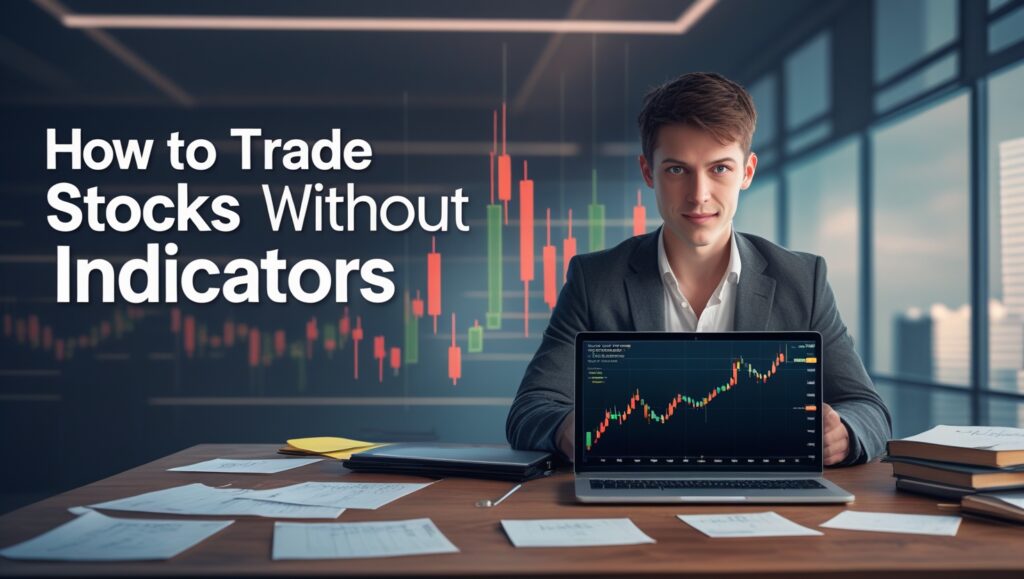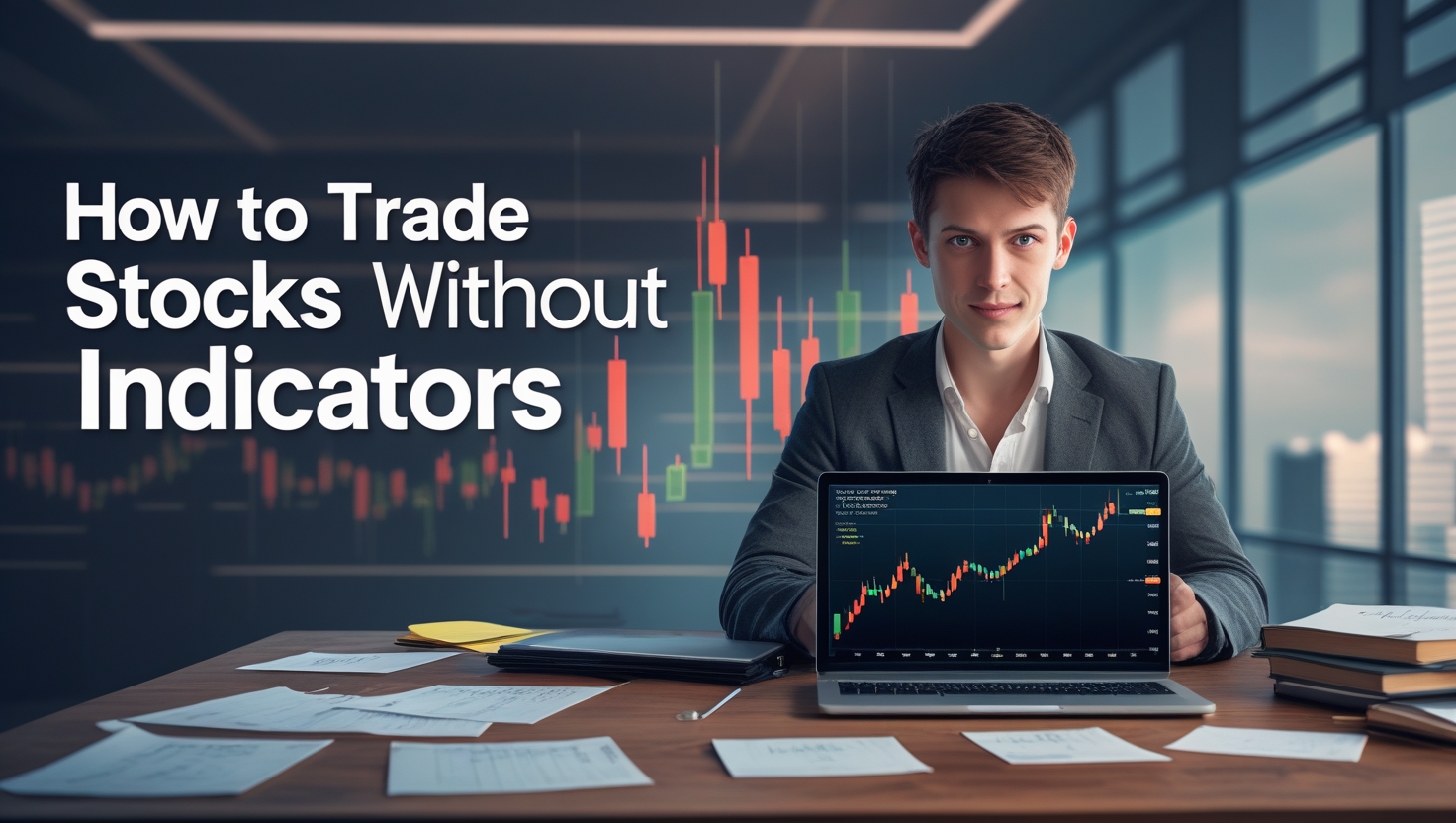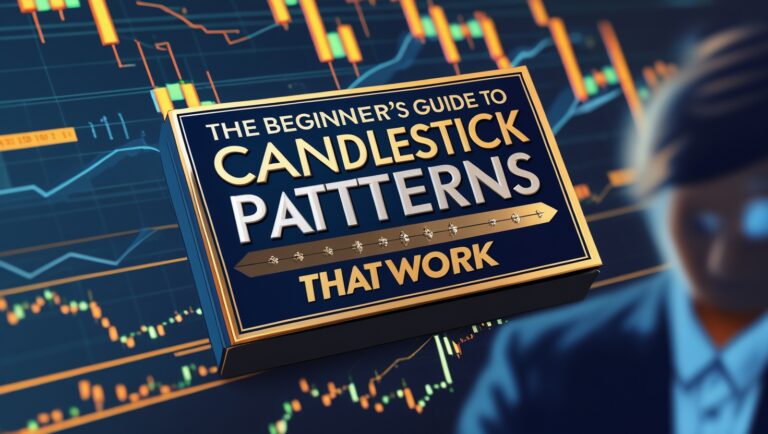How to Trade Stocks Without Indicators (Beginner-Friendly Strategy)
How to Trade Stocks Without Indicators (Beginner-Friendly Strategy)
When I first started trading, I thought indicators were essential. RSI, MACD, VWAP — you name it, I tried it. But the more I used them, the more confused and late I became. It felt like I was always reacting instead of acting. That’s when I made a bold move: I removed every single indicator from my charts.
The result? My trading got simpler, faster, and way more profitable.
In this post, I’m breaking down exactly how I trade without indicators, and how you can too — even if you’re brand new. This is the beginner-friendly strategy that helped me get consistent and start paying my bills with stocks. And if you want the full breakdown step-by-step, it’s all inside my ebook.

Table of Contents
Why I Stopped Using Indicators
Most indicators are based on lagging data. By the time the signal appears, the move is already halfway over. I noticed that every time I waited for the indicator to confirm, I was entering late, exiting late, or second-guessing myself.
Removing them forced me to actually read price action and trust my own eyes. It was uncomfortable at first, but it made me a better trader.
Clean Charts, Clean Mind
When you remove all the noise from your chart, you start seeing the market differently. You begin to recognize key support and resistance levels, trendlines, and momentum based on price and volume — not colored lines crossing each other.
I only use candlestick charts, basic volume, and levels from previous days. That’s it. This setup gives me a clear, distraction-free view of what the stock is doing and where the buyers or sellers are hiding.
The Only Tools I Use
Here’s what I actually use when scanning or trading:
- Price action (what the candles are doing)
- Volume (is it unusual or low?)
- Daily chart levels (support and resistance)
- News or catalyst (why is the stock moving?)
That’s all. I don’t need anything more. This is what allows me to spot stocks that are about to move — and I show you how to do it in my ebook.
Entry Strategy Without Indicators
Once I find a stock on my watchlist, I look for a clean breakout or breakdown zone. This means a stock that’s consolidating under a key level, showing rising volume, or forming higher lows into resistance.
If the stock breaks that level with volume, I’m in. I keep my stop just under the base or the last clear support. It’s a simple structure, but it gives me clarity. No guessing.
Why This Works for Small Accounts
When I had a small account, the biggest challenge was overtrading and losing confidence. Trading without indicators forced me to be picky. I couldn’t just enter because “MACD looked good.” I had to find setups that were obvious — even to the naked eye.
This style works great for beginners because it teaches you to trust price and risk, not tools. It’s faster, cleaner, and more reliable — especially for quick in-and-out trades.
What I Teach Inside My Ebook
In my ebook, I walk you through how I scan the market, how I build my 6-stock watchlist before 9:30AM, and how I enter trades without using indicators. You’ll learn exactly how I pay my bills with this simple system.
This isn’t theory. It’s what I do every week to generate cash flow from the market using a repeatable strategy.
Many people ask me, “But don’t you need indicators to confirm your trades?” My honest answer is no. Price action tells me everything I need to know. If a stock is consolidating near a breakout level with rising volume, that’s my confirmation. I don’t need a green arrow from an indicator to take a trade I already understand.
The market rewards simplicity and discipline. That’s what I teach. The more tools you add, the more hesitant you become. I focus on one setup, one trade idea, and one risk plan at a time. That’s how I’ve stayed consistent and grown my small account over time.
In fact, when I stopped using indicators, I saw fewer losses and stronger entries. I was no longer hesitating or waiting for extra confirmation. I trusted the chart and executed based on logic — not emotions or flashy signals.
I remember trading with MACD and RSI and feeling overwhelmed. I’d get conflicting signals and freeze. Once I removed all of that and focused on levels, volume, and structure, it finally clicked for me. That’s what I now teach in my ebook.
One of the most important parts of trading without indicators is knowing your entry and exit before you even enter the trade. I map out my levels pre-market and I already know what would trigger me to enter. This is what gives me confidence — not some random line on a chart.
New traders often feel like they need more tools to succeed. I used to think that too. But in reality, the less you rely on tools, the more you begin to rely on your process — and your edge. That’s what turns a beginner into a confident trader.
This method also helps avoid analysis paralysis. I know what I’m looking for, and if it’s not there, I don’t trade. There’s no pressure to force anything. That’s how I stay calm and avoid emotional decisions.
Some of my best trades have come from setups that looked “too simple.” But when volume, price, and levels align, that’s all I need. That’s when I size in with confidence and exit with profit — all without touching a single indicator.
I’ve built this routine over time, but you don’t have to start from scratch. That’s why I put it all in my ebook. It shows how I scan, how I select stocks, how I read the chart, and how I plan my trades — all without any complex tools.
If you’re trading with a small account, this is even more powerful. You don’t have the luxury of taking unnecessary risks. This strategy keeps you focused on clean setups with clear risk, and that’s what matters when you’re trying to grow steadily.
My process helped me go from overwhelmed to consistent. Now, I only trade 2–3 times a week, and it’s enough to cover my bills. It’s not magic — it’s structure. And if you’re ready to simplify your trading, I can show you exactly how I do it.
You can keep trying different indicators and switching strategies every week, or you can focus on what really works. My goal is to help you skip the trial-and-error phase and start seeing results sooner. That’s why I created this ebook — so you don’t waste years chasing setups that don’t fit you.

Stay ahead in the stock market! Subscribe to our newsletter and receive exclusive stock flow reports, trading insights, and actionable tips directly in your inbox. Join thousands of traders who get our updates first.







